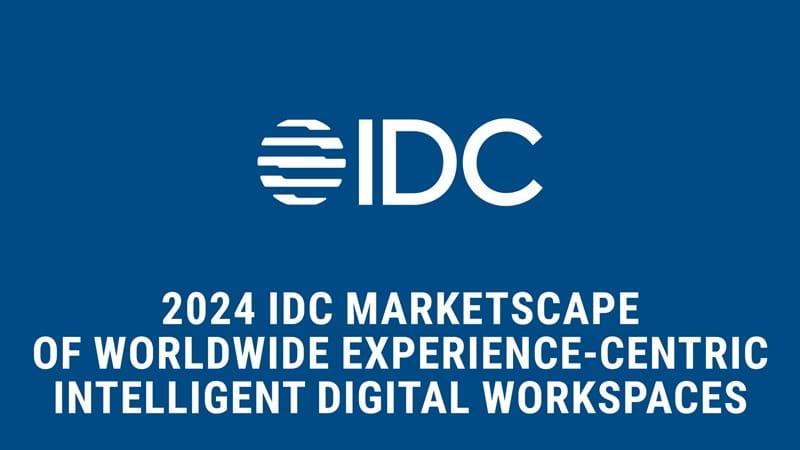Return on experience: how much is employee experience worth?
Investing in an employee experience platform brings countless benefits to your staff and your enterprise, but exactly how much payoff can you expect? With ROX, the new performance metric measuring customer and employee experience, you can find out the true value of your digital experiences.

What is return on experience?
Many of you may already be familiar with return on investment (ROI) as a performance metric for directly measuring the efficiency of a particular investment, relative to cost.
Return on experience, or ROX, is the new ROI. A metric that looks across your enterprise to measure various factors that have a direct influence on the customer and employee experience – which ultimately prove decisive to your bottom line.
Digital experiences make up so much of a customer or employee’s interactions with your organization, and in today’s world of business, it is these experiences that build relationships, not products: Coca-Cola doesn’t offer soft drinks, they sell community. Volvo doesn’t sell cars, but safety.
It is these stories that define the relationship between people and your brand, so understanding how improvements to employee and customer experiences help shape this relationship is crucial for knowing where improvements can be made.
Why is ROX valuable?
ROX is about mapping out the experiences that lead to results. It is not a new net promoter score, or an employee satisfaction survey. ROX offers greater insight into the customer and employee experiences you deliver, and the array of influencing factors that constitute these experiences.
By measuring ROX as well as ROI, you gain greater control over the relationship people have with your brand and the experiences you offer, which in turn dictates your enterprise’s success.
Measuring ‘return on experience’ (ROX) will help you understand your earnings on investments in the parts of your company directly related to how people interact with your brand.
With more data on the tangible results that employee and customer experiences have on your profit, your enterprise can make smarter, more informed investments into improving these experiences and boosting your bottom line.
ROX vs. ROI?
Calculating ROI is a simple task of measuring the yield of an investment against its initial cost:
ROI [%] = (final value of investment − initial value of investment) / cost of investment × 100
Another variation of the same ROI formula may similarly seek to compare gains against initial cost, though this would offer more limited scope, as it does not consider the progress in value an investment makes as it matures. This calculation would look more like:
"ROI [%] = (net investment benefits − cost of investment) / cost of investment × 100"
Where ROI is narrow in its calculation of cost against return, ROX deals with broader, more intangible aspects of the customer and employee experience. Because of this, it can seem harder to measure ROX and its various influencing factors.
Rather than the value of an investment, an ROX formula instead focuses on the value of benefits to experience:
ROX [%] = net value of benefits to experience / cost of investment x 100
In their 2019 Customer Insights Survey, PwC laid out a model for determining ROX that categorizes its various factors into five distinct elements:
#1. Pride – How engaged are people with the company’s purpose and strategy?
#2. Influencers – Identify the people and things that hold the greatest influence on employee and customer experience. This could include your leadership, your brand ambassadors, or even content on your intranet.
#3. Behavior – This relates to the positive actions of your company and your employees that shape and inform your culture. Your company culture has massive influence on customer and employee experiences, so it pays to define what makes your culture unique.
#4. Value drivers – At what point do you deliver value to customers or employees? This element focuses on those “magic moments” which have a decisive impact on experience. It may be helpful for your enterprise to lay out all the various touchpoints that affect customer and employee experiences and order them by their degree of impact.
#5. Outcome – This is all about identifying how experiences impact the bottom line. What is the connection between experiences and business performance? For example, your investment in employee experience technology may have led to an increase in engagement, in turn improving productivity and net income per employee.
By addressing each of these five elements, your business can identify a framework for measuring and understanding the experiences you provide and the return on these experiences. With this information, deciding exactly where to invest and what to change to improve your ROX becomes much more straightforward.
How to measure ROX
As calculating ROX is more complex than ROI, it may help to provide an example.
Let’s say you’ve invested $50k in new technology to enhance the employee experience and strengthen employee loyalty. To measure the ROX, you could look at improvements in staff turnover rates and increased employee satisfaction rates.
To quantify the value of reduced staff turnover, we can use the cost savings associated with lower onboarding costs and less disruption to productivity. For this example, your new investment resulted in a 10% drop in staff turnover, saving $40k.
To get the value of improved employee satisfaction, we can measure historic performance against historic employee satisfaction rates to determine the impact of the increase. In our example, your investment directly led to a rise in employee satisfaction scores by one point. You measured previous performance against employee satisfaction scores to find out that, on average, one point of ESAT scores are equivalent to $75k more revenue.
Applying this to our formula, the ROX of this investment in employee experience would look like:
ROX = ($40k + $75k) / $50k x 100 = 230
This means that for our example, the value of investing in employee experience, or the ROX, was 230%. If we're looking solely at the net benefits of return on experience (ROX), this calculation would offer 130% return in net benefits.
What ROX means for enhancing experience
ROX brings a host of new possibilities for improving customer and employee experiences. With the means to properly evaluate the value of experience, it is much easier to identify areas to invest in and improve.
If you’re looking to improve customer loyalty, calculating ROX can show you the most influential and valuable aspects of your customer journey. With this you can highlight areas where investment in new processes or technology will provide the most value add, bringing your customers back to you time and time again.
Similarly, if you aim to increase employee engagement and communication across your enterprise, ROX can show where your current employee experience falls short. If employees are more productive when they communicate and share knowledge with colleagues, ROX can calculate the value that a powerful communications platform would bring to your enterprise.
Is your digital workplace holding back employee experience?
Discover how a next-generation employee experience platform can overcome your most stubborn challenges by speaking to an expert today.












